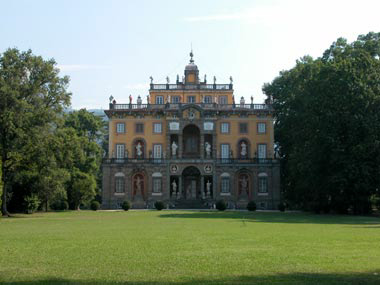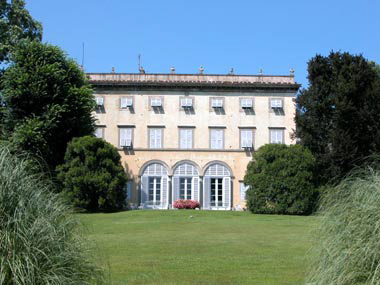Villas of the Pizzorne

Information
Recommended season:
Spring


The Pizzorne are a chain of rises, not so much high as steep, which are found to the north-east of the city of Lucca and in the north define the Lucchese plains. Since Renaissance times, some of the most noteworthy villas of the Lucchese have been built on the slopes of the Pizzorne. The position was particularly favourable due to many factors. The nature of the land and its mid-day exposure together offered the ideal conditions for agricultural cultivation, a splendid panorama and a pleasant climate. Many of these high-class residences have been built in the position that Sanminiati, author of a treatise on villas at the end of the 17th century, considered as ideal: on the boundary between plains and mountains. This guaranteed the presence of agricultural zones apt for various cultivations (grain, vines, olives) and woodland for hunting in the grounds of the villa. Such a position also offered the availability of steeply sloping water flows, useful be it for field irrigation be it for the waterworks of the fountains.
A possible itinerary for the villas of the Pizzorne could start with a visit to the park surrounding Villa Garzoni in Collodi. From here you can take the small but scenic road that leads to San Gennaro. From San Gennaro you continue for Petrognano and, passing through Tofori, you reach Camigliano where you can visit Villa Torrigiani which is today called Colonna, one of the most majestic villas of the Lucchesia. From Camigliano you continue for Segromigno in Monte to visit another great example of 17th century architecture: Villa Mansi.
From Segromigno, passing through San Colombano you reach Villa Reale in Marlia, residence of Princess Elisa Baciocchi during the 1800's. From here you continue for the great villas in San Pancrazio: Villa Grabau, with its extremely interesting garden, and Villa Oliva, which was the celebrated residence of the Buonvisi family. Along the short distance separating Villa Reale in Marlia from Villa Grabau, you can see Villa Diodati from the road, a precious example of late Renaissance architecture with the characteristic use of ashlar on the façade decoration.
A possible itinerary for the villas of the Pizzorne could start with a visit to the park surrounding Villa Garzoni in Collodi. From here you can take the small but scenic road that leads to San Gennaro. From San Gennaro you continue for Petrognano and, passing through Tofori, you reach Camigliano where you can visit Villa Torrigiani which is today called Colonna, one of the most majestic villas of the Lucchesia. From Camigliano you continue for Segromigno in Monte to visit another great example of 17th century architecture: Villa Mansi.
From Segromigno, passing through San Colombano you reach Villa Reale in Marlia, residence of Princess Elisa Baciocchi during the 1800's. From here you continue for the great villas in San Pancrazio: Villa Grabau, with its extremely interesting garden, and Villa Oliva, which was the celebrated residence of the Buonvisi family. Along the short distance separating Villa Reale in Marlia from Villa Grabau, you can see Villa Diodati from the road, a precious example of late Renaissance architecture with the characteristic use of ashlar on the façade decoration.
- BELLI BARSALI I., Ville e committenti nello stato di Lucca, Maria Pacini Fazzi, Lucca, 1980
- CAZZATO V., FAGIOLO M., GIUSTI M. A., Teatri di Verzura: la scena del giardino dal Barocco al Novecento, Edifir, 1993
Scopri altre attrazioni vicino a Villas of the Pizzorne
See allYou may also like..
See allFind more
0







 By car
By car







